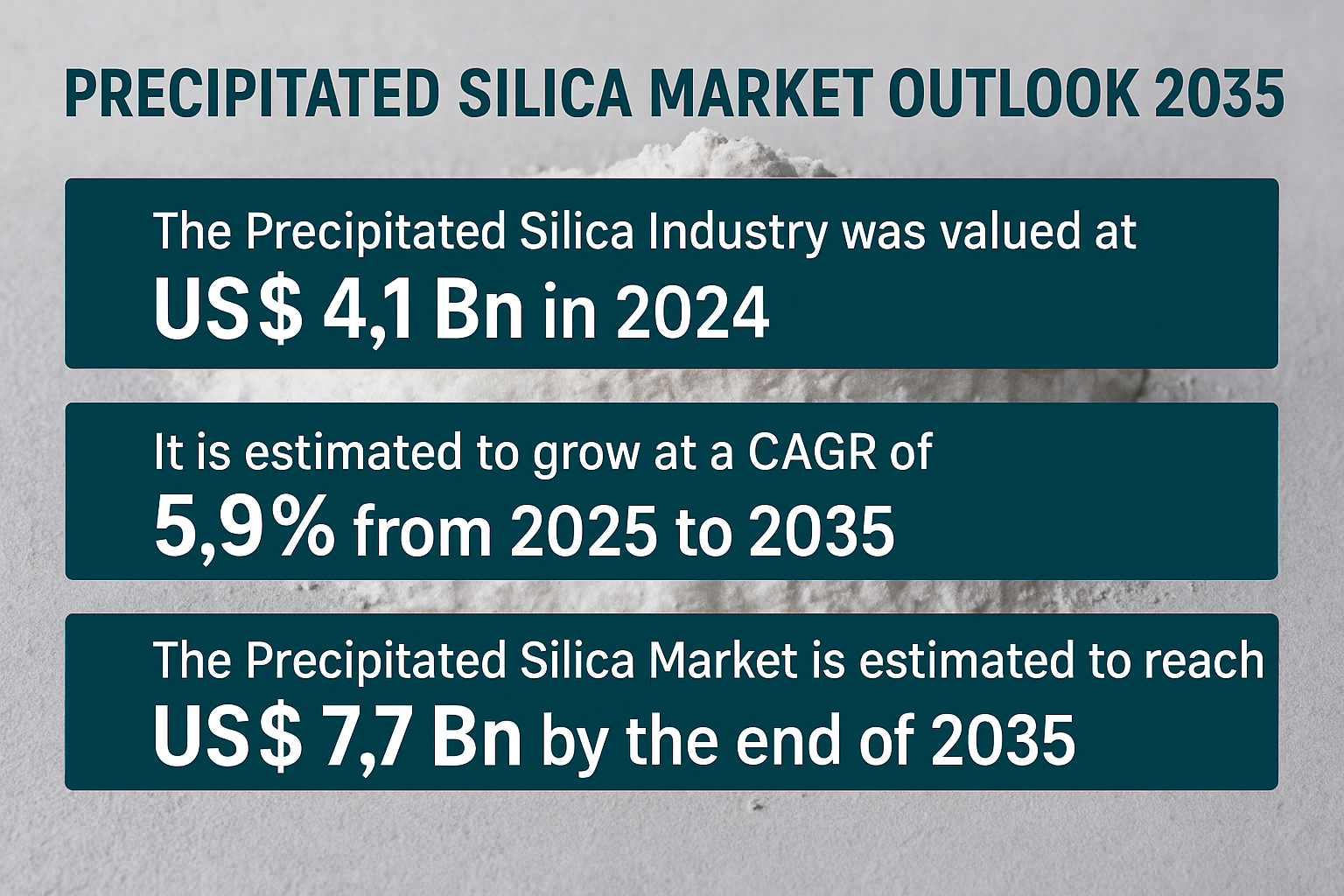Precipitated Silica Market to Reach US$ 7.7 Bn by 2035, Driven by Demand for Eco-Friendly and Fuel-Efficient Tires

The global Precipitated Silica Market is poised to grow steadily, reaching US$ 7.7 Bn by the end of 2035 from US$ 4.1 Bn in 2024, expanding at a CAGR of 5.9% from 2025 to 2035. This growth trajectory is primarily fueled by the rising demand for eco-friendly and fuel-efficient tires, as environmental regulations across major economies continue to tighten.
Full Market Report available for delivery. For purchase or customization, please request here –
https://www.transparencymarketresearch.com/precipitated-silica-market.html
Precipitated silica has become a crucial alternative to carbon black in tire manufacturing, offering enhanced fuel efficiency, reduced rolling resistance, and superior grip—key features in the production of green tires. With the EU Tire Labeling Regulation (2020/740) and U.S. CAFÉ Standards enforcing stricter emission and efficiency norms, tire manufacturers are increasingly integrating silica to balance performance with sustainability.
Beyond the tire sector, non-tire rubber applications such as conveyor belts, shoe soles, hoses, and industrial seals are witnessing growing adoption of precipitated silica due to its mechanical strength and durability. Moreover, emerging economies such as China, India, and Indonesia are contributing significantly to global demand, supported by expanding automotive manufacturing bases and evolving sustainability standards.
Leading global tire makers including Michelin, Bridgestone, and Continental are investing in R&D partnerships to maximize the performance benefits of silica-based compounds. For instance, Michelin’s integration of high-dispersion silica has demonstrably reduced rolling resistance while improving road safety—an innovation that sets new benchmarks in green tire technology.
The market outlook also benefits from continuous industrialization, growth in automotive sales, and technological advancements in production processes that enhance silica purity and particle control. This shift toward sustainable and high-performance materials underscores the industry’s long-term transformation trajectory.
- Art
- Causes
- Crafts
- Dance
- Drinks
- Film
- Fitness
- Food
- Παιχνίδια
- Gardening
- Health
- Κεντρική Σελίδα
- Literature
- Music
- Networking
- άλλο
- Party
- Religion
- Shopping
- Sports
- Theater
- Wellness
